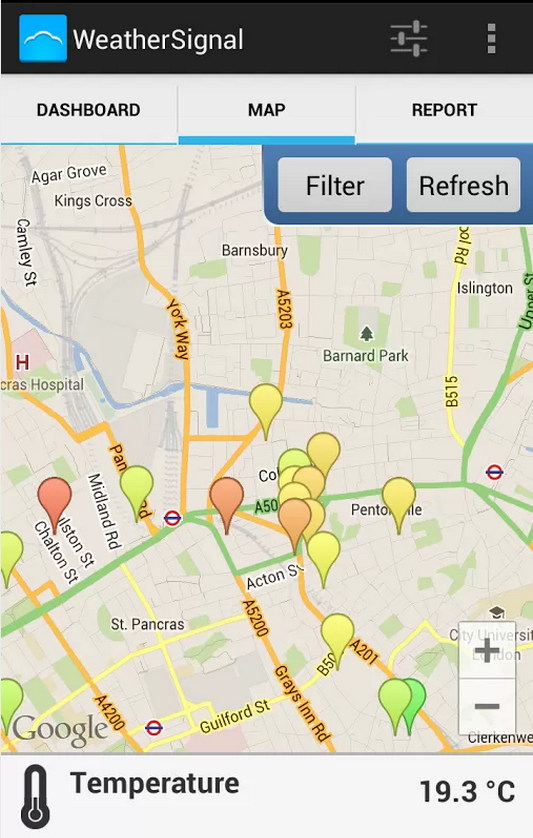You probably never think about the temperature of your smartphone’s battery, but it turns out to provide an interesting method for tracking outdoor air temperature. It’s a discovery that adds to other evidence that mobile apps could provide a new way to measure what’s happening in the atmosphere and improve weather forecasting.

Startup OpenSignal, whose app crowdsources data on cellphone reception, first noticed in 2012 that changes in battery temperature correlated with those outdoors. On Tuesday, they published a scientific paper on that technique in a geophysics journal and announced that the technique will be used to interpret data from a weather crowdsourcing app. OpenSignal originally started collecting data on battery temperatures to try and understand the connections between signal strength and how quickly a device chews through its battery.
OpenSignal’s crowdsourced weather-tracking effort joins another accidentally enabled by smartphones. A project called PressureNET that collects air pressure data by taking advantage of the fact many Android phones have a barometer inside to aid their GPS function (see “App Feeds Scientists Atmospheric Data From Thousands of Smartphones”). Cliff Mass, an atmospheric scientist at the University of Washington, is working to incorporate PressureNET data into weather models that usually rely on data from weather stations. He believes that smartphones could provide valuable data from places where there are no weather stations, if enough people start sharing data using apps like PressureNET.
Don’t settle for half the story.
Get paywall-free access to technology news for the here and now.